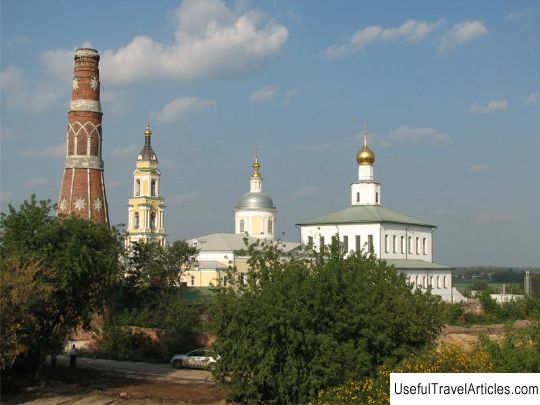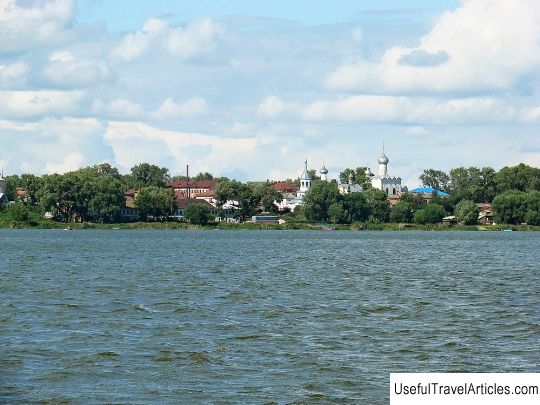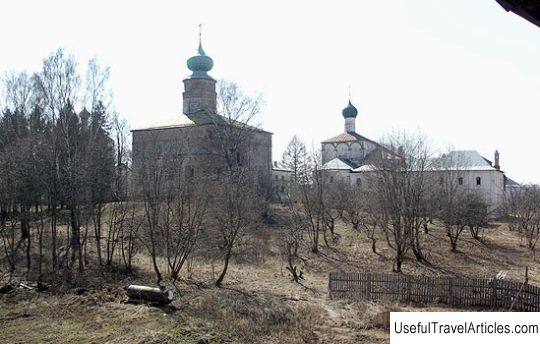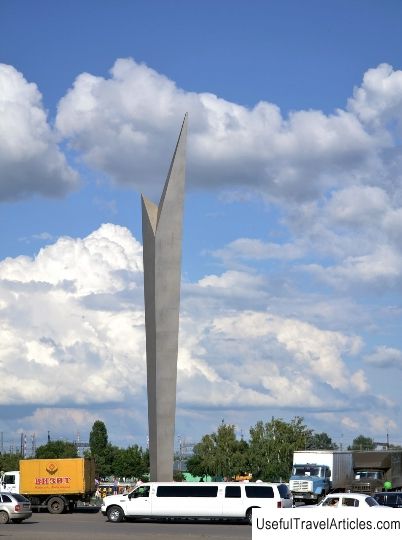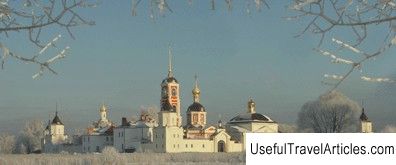Borisoglebskiy monastery description and photos - Russia - Golden Ring: Rostov the Great
Rating: 8,6/10 (906 votes) 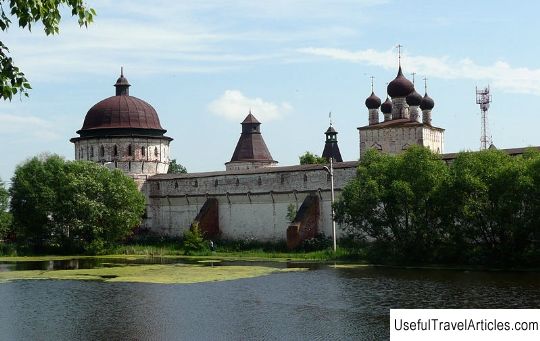
Borisoglebsky monastery description and photos - Russia - Golden Ring: Rostov the Great. Detailed information about the attraction. Description, photos and a map showing the nearest significant objects. Photo and descriptionThe Borisoglebskiy Monastery is located in the Borisoglebskiy settlement of the Rostov region. It is not known for certain when exactly it was founded. It is known that it appeared near Rostov sometime after 1340, most likely at the end of the 14th century. the monastery was founded by monks - brothers Pavel and Fyodor. The hermit Fyodor was the first to appear on the Ustye. He settled on the bank of the river, in the forest, in a chopped cell. Three years later, his brother Paul joined him. In 1363, Sergius of Radonezh came to Rostov to reconcile the princes. At that time, fortress-monasteries were erected on the outskirts of the Moscow principality. The hermits Pavel and Fyodor came to him to ask him to help them found a monastery. Sergius asked the Rostov prince Constantine to allow the hermits to create a monastery. To the monastery dedicated to Boris and Gleb, worldly masters and monks gradually began to flock. After a while, a temple, cells, a defensive wall were already erected. The fortress wall was necessary for the monastery, because it stood on the northeastern outskirts of the Moscow principality, acting as an obstacle first to the Tatars, and then to the Polish-Lithuanian troops. The Borisoglebsk monastery in a short period became a glorified place, here it pilgrims flocked. Sergius of Radonezh was here, and Vasily the Dark, who was hiding here from Yuri Zvenigorodsky, and Ivan the Terrible. According to legend, it was in the Borisoglebsk monastery that Peresvet was tonsured as a monk. Kuzma Minin and Dmitry Pozharsky, who led the Russian troops in the Time of Troubles, came here. Great dukes and tsars (the Rurikovichs and the first Romanovs) showed special respect to the monastery. Thanks to its high patronage, the monastery in a short time became one of the largest landowners and possessed great wealth. The prosperity and wealth of the monastery is evidenced by the delightful stone buildings that have survived to this day since the 16th century. The first stone church on the territory of the monastery was founded in 1522 on the site of the old Borisoglebsk church at the behest of Vasily III. The builder of this temple is the master Grigory Borisov, who at about the same time was building the refectory Church of the Annunciation in the monastery. The Boris and Gleb Cathedral did not reach us in its original form, it was rebuilt many times. In 1780 the pozakomarnoe roofing disappeared, it was replaced by a usual four-pitched roof. In 1810, the side-chapel of Elijah the Prophet was attached to it, the ancient blades on the walls of the cathedral were hewn away, the old porch was replaced. During the restoration in 1925, it was discovered that the temple was made with five domes - the foundations of the later corner drums were preserved under the roof. Next to the northern wall of the cathedral is the tomb of Fyodor and Paul. The refectory Church of the Annunciation, together with the abbot's chambers, makes up one complex. Master Grigory Borisov also built the fraternal building. Brick walls around the monastery were built during the time of Ivan the Terrible. They withstood the siege of the Polish-Lithuanian troops approaching the monastery during the Time of Troubles. It is not known exactly whether the monastery was taken or not. In the first half of the 17th century. the walls of the monastery were rebuilt. High powerful walls with two gate churches (Sergievsky and Sretensky) make the monastery ensemble truly unique. Climbing the walls, you can view the monastery from above. Behind the Borisoglebsk Cathedral is the cell of St. The recluse Irinarkh, who lived in the 16th century. and spent most of his life in the monastery - 38 years. Venerable Irinarkh is famous for his numerous exploits, the prediction of the invasion of Moscow by Lithuanians. After his death, his relics became miraculous: various miraculous healings took place on his tomb. Before the revolution, chains, a hat and a whip of Irinarch were preserved in the monastery. At the end of the 17th century. the construction of the monastery ensemble was completed. At the end of the 18th century. by decree of Catherine II, Borisoglebsk settlements were seized from the monastery in favor of Count Orlov; the monastery has significantly lost its welfare. Many precious royal deposits and utensils were stolen and sold, by the 19th century. only not especially valuable things remained here. In 1924 the monastery was abolished. Since 1923, a branch of the Rostov Museum was located in some of its buildings. Local authorities destroyed many valuable monuments of icon painting and bells, it was even supposed to dismantle the belfry. Since 1930, the monastery buildings were occupied by various institutions: a police station, a savings bank ... Only the Annunciation Refectory Church and the abbot's chambers were under the jurisdiction of the State Museum ... Some of the valuables were taken to Moscow and Yaroslavl. What remained in the monastery was almost completely lost. In 1954 the museum was closed, but in 1961 it was reopened, it occupied the entire territory of the monastery. Restoration work began, which returned the monuments, distorted by the perestroika of the 18-19 centuries, to their original appearance. Since 1994, the territory of the monastery has been divided between the Orthodox Church and the museum.          We also recommend reading Blue Grotto description and photos - Malta: Island of Malta Topic: Borisoglebskiy monastery description and photos - Russia - Golden Ring: Rostov the Great. |
